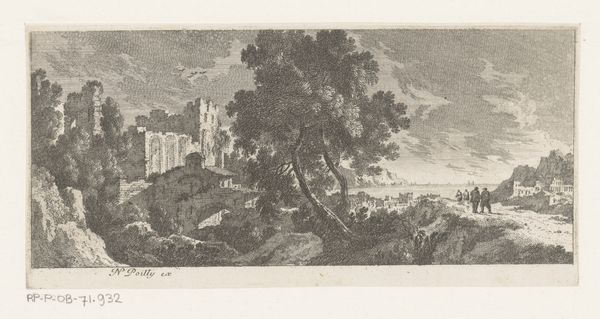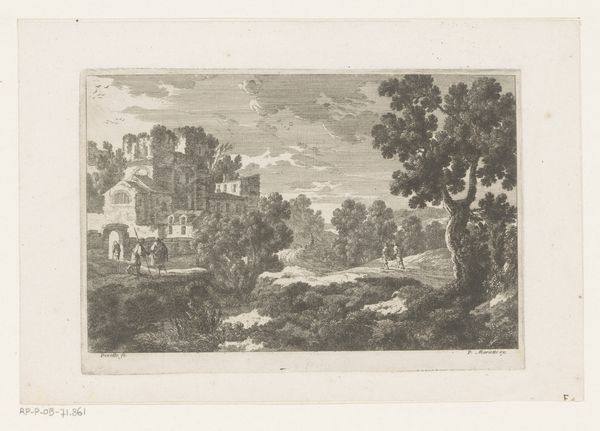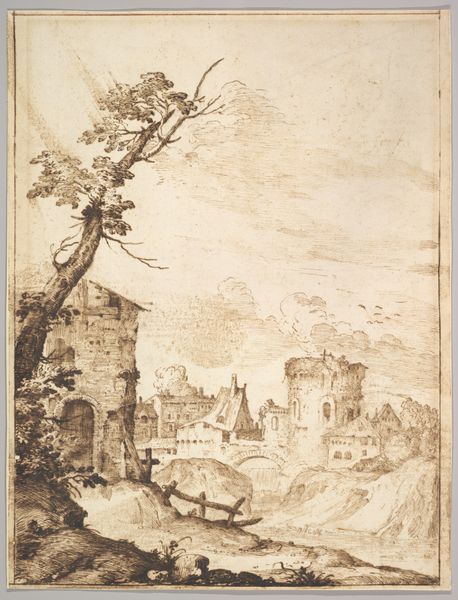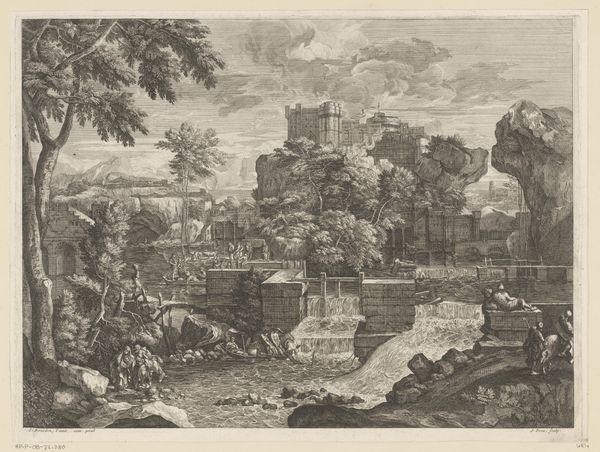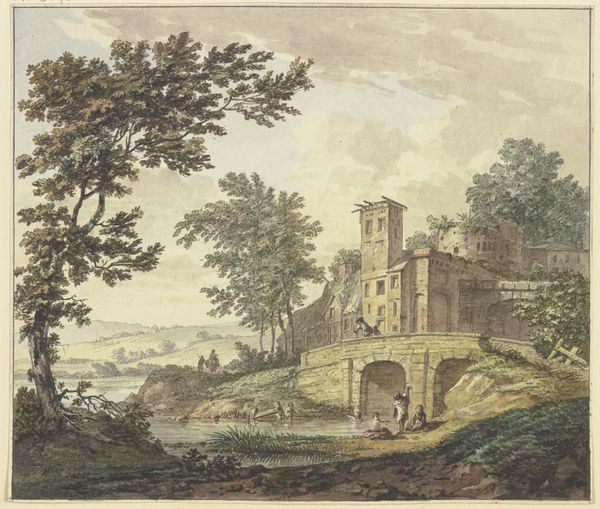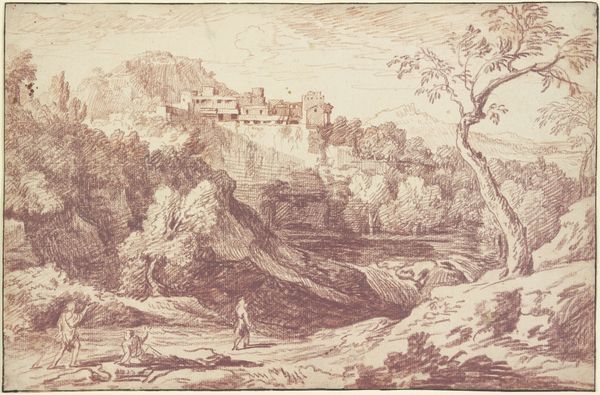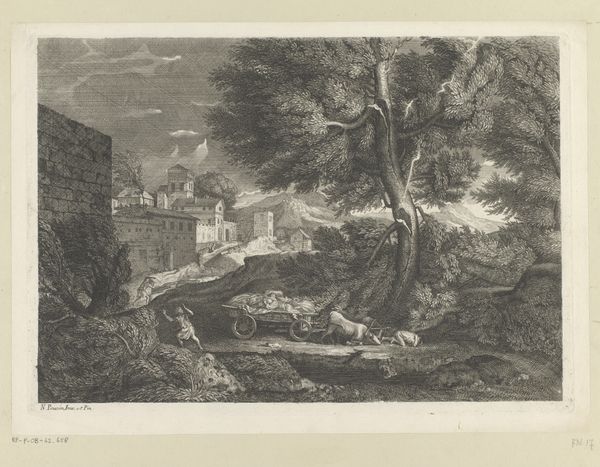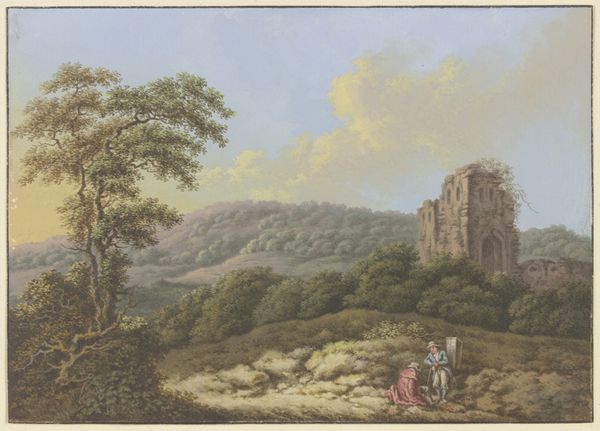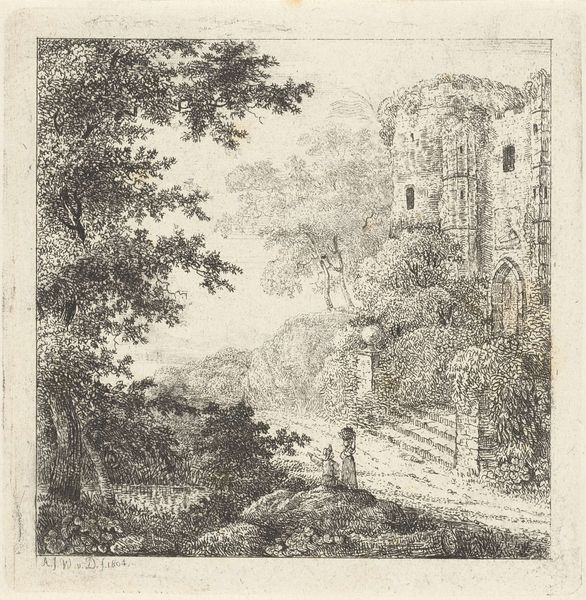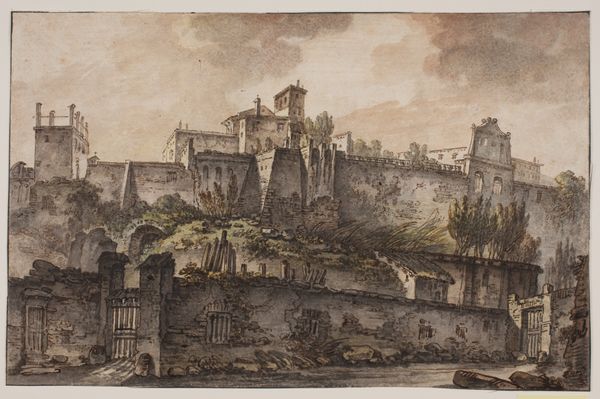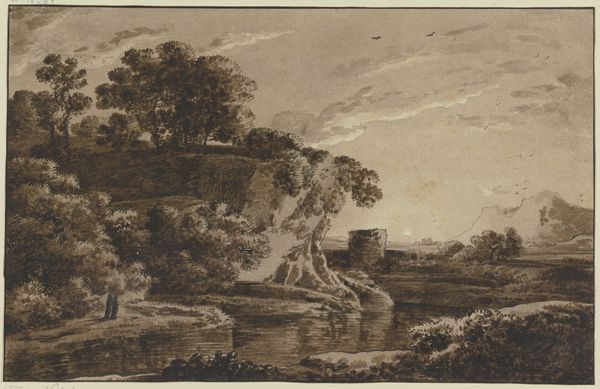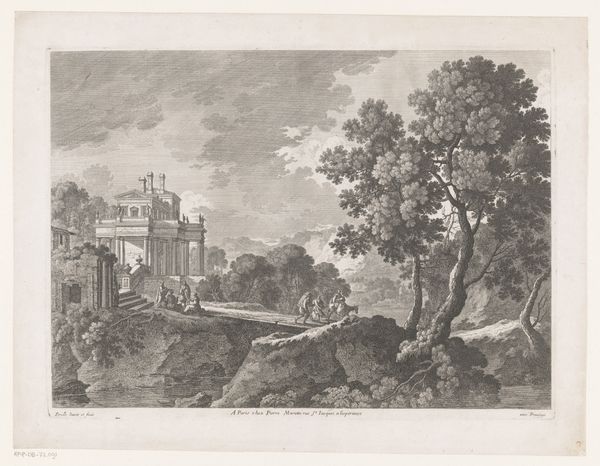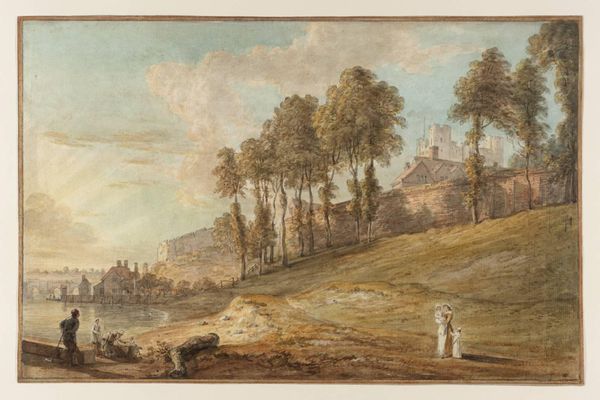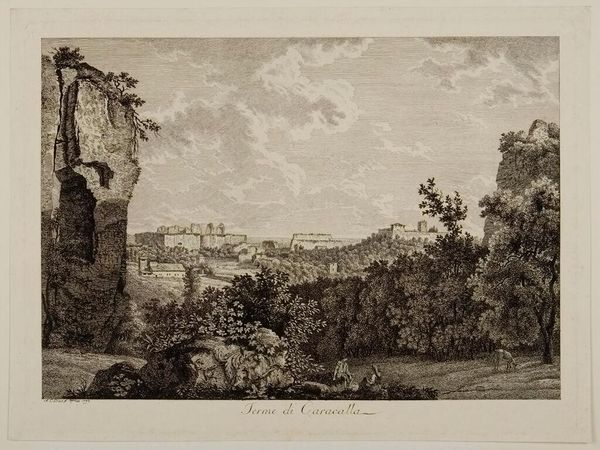
Dimensions: support: 243 x 353 mm
Copyright: CC-BY-NC-ND 4.0 DEED, Photo: Tate
Curator: This is an 18th-century depiction of Kenilworth Castle by an artist from the British School. Editor: The somber tonality and overgrown foliage lend it a melancholic, almost gothic, quality. Curator: Indeed. Kenilworth, by this period, represented the fading of aristocratic power and the rise of landscape romanticism. Think about the historical weight of the castle, a symbol of English royalty, now in ruins. Editor: Structurally, the artist employs a picturesque framing, leading the eye from dark foreground into a light-filled distance. It is almost like theater scenery. Curator: It is fascinating how they utilize the ruin to evoke themes of loss, the passage of time, and the transience of human achievement. Editor: The composition masterfully balances the decaying architecture with the encroaching natural world. Curator: Absolutely. Considering British history, one sees the castle less as a mere object and more as a signifier of power imbalances and class. Editor: A compelling tension between decay and enduring presence. Curator: It leaves you contemplating power dynamics. Editor: I am simply marveling at the interplay of light and shadow.
